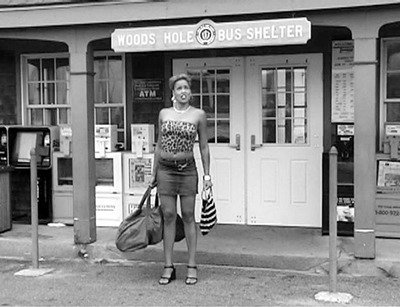By Aileen Torres
After years of setbacks ‘Au Pair Chocolat’ to screen at Anthology Film Archives
“Au Pair Chocolat” is an independent film, starring Domenica Cameron-Scorsese, the daughter of Martin Scorsese, about a young woman from Harlem who becomes a nanny for a wealthy African-American family in Martha’s Vineyard. It will run as part of the 12th African Diaspora Film Festival, playing November 26 to December 12 at Anthology Film Archives on 2nd Ave. It is a film that took several years to make, plagued with unavoidable delays. But, in the end, the project came together, affirming a family in the process.
Abigail McGrath, 53, wrote the script for the film. Her son, Benson, directed it. Her husband acted in the film, and her other son, who is a musician, composed the soundtrack.
“What I’m really grateful for is that the family was able to work like fingers on a hand,” said McGrath, whose warm, exuberant nature is instantly evident in her voice. Still, she revealed that working with members of her immediate family was sometimes a difficult process. She found herself suppressing the maternal urge to nag.
“All a parent really wants is to be able to have an adult life with her children. I wanted to be able to have a life with them after years of making school-box lunches.”
Benson took the lead on the technical side of production, which was only natural since he works in the film industry. He would travel back and forth between Los Angeles, where he lives, and New York to work on the film. He shot Au Pair Chocolat digitally to keep the budget low.
Shooting began in 2000, but weather, financial and technical issues delayed the completion of the project. The film took about four weeks to shoot, but post-production, involving film and sound editing, took much longer than planned.
The film was shot in three locations: Martha’s Vineyard, the Catskills and Harlem. The overall budget—around $400,000—was kept in check by the fact that Abigail already owned a home in both Martha’s Vineyard and the Catskills, so she was able to house and feed the cast and crew for a relatively inexpensive amount.
The equipment cost thousands of dollars, and, oddly enough, it was lost along a drive to the Vineyard for one of the film’s initial shootings. The crew had loaded all the equipment onto a truck and started off towards the island. But when they got there, they found themselves with an empty truck. “It was awful!” said Abigail. “We had nothing to shoot with! We didn’t know what had happened. We thought the stuff had been stolen the night before.”
They called the police to report the missing equipment. Abigail was very nervous because insurance would not cover the loss. On the drive back to New York, Benson called and said someone had found the equipment. It turned out that the back door of the truck had not been bolted shut. As a result, the door flew open along the trip, leaving an expensive trail of equipment in its wake. The person who came across the strewn equipment was a gardener who realized the worth of what he had stumbled upon and called the police to report his find.
Unfortunately, the shooting still had to be postponed because the cast and crew had gone their separate ways by then, and it made sense to wait till the weather became warmer since the script is set in the summertime.
Fast forward to a year later. Similar scenario: Abigail and company are driving, but, this time, they are in New York City, traveling by car. All of a sudden, something hits the roof. It is a piece of one of the planes that crashes into the World Trade Center on September 11, 2001. The police come over and tell them to get out of the car and go someplace safer, so they do. But they leave behind all the production essentials for the film, including the camera, soundtrack, and the film itself, which they were on the way to deliver to the editor.
“We leave the windows and doors open,” recounted Abigail. “We go down to Battery Park, and we look down Church Street and see these huge, billowing clouds from the World Trade Center. We later go back to the car, and there is white ash fallen everywhere. Everything is destroyed. Camera, sound stuff— Everything.”
Some of the film footage was salvaged, but a significant amount was lost because it had not been digitally saved. “It took us a while to figure out what we lost, how much we had lost, how much we could use,” said Benson. “We were seriously delayed.
“Also, after September 11th, a general malaise set in. It was difficult to do anything at that time.”
Soon enough, winter set in, which meant that shooting absolutely had to be postponed till the summer, when the weather would be appropriate for the setting of the script. It became difficult to coordinate schedules with the participants dispersed across the country and involved in other projects. Eventually, an editor in LA came on board to share responsibility for post-production. She and Abigail ended up having a very understanding, effective working relationship.
Somehow, the project was completed, and it screened at a film festival in Martha’s Vineyard in Summer 2003. “Audience reaction was great,” said Benson. “It reinvigorated us.”
People have approached Abigail after seeing the film and complained about its lack of dramatic climax. “They were left wondering when the girl is going to be raped,” said Abigail, which is exactly the type of melodrama she wanted to avoid. “A film does not have to have false climaxes,” she said. “It can just be about things that happen to people in daily life,” the point being that there are choices available on how to act in or react to each event or circumstance. The difficulty lies in seeing that those choices do exist and knowing what they are.




























